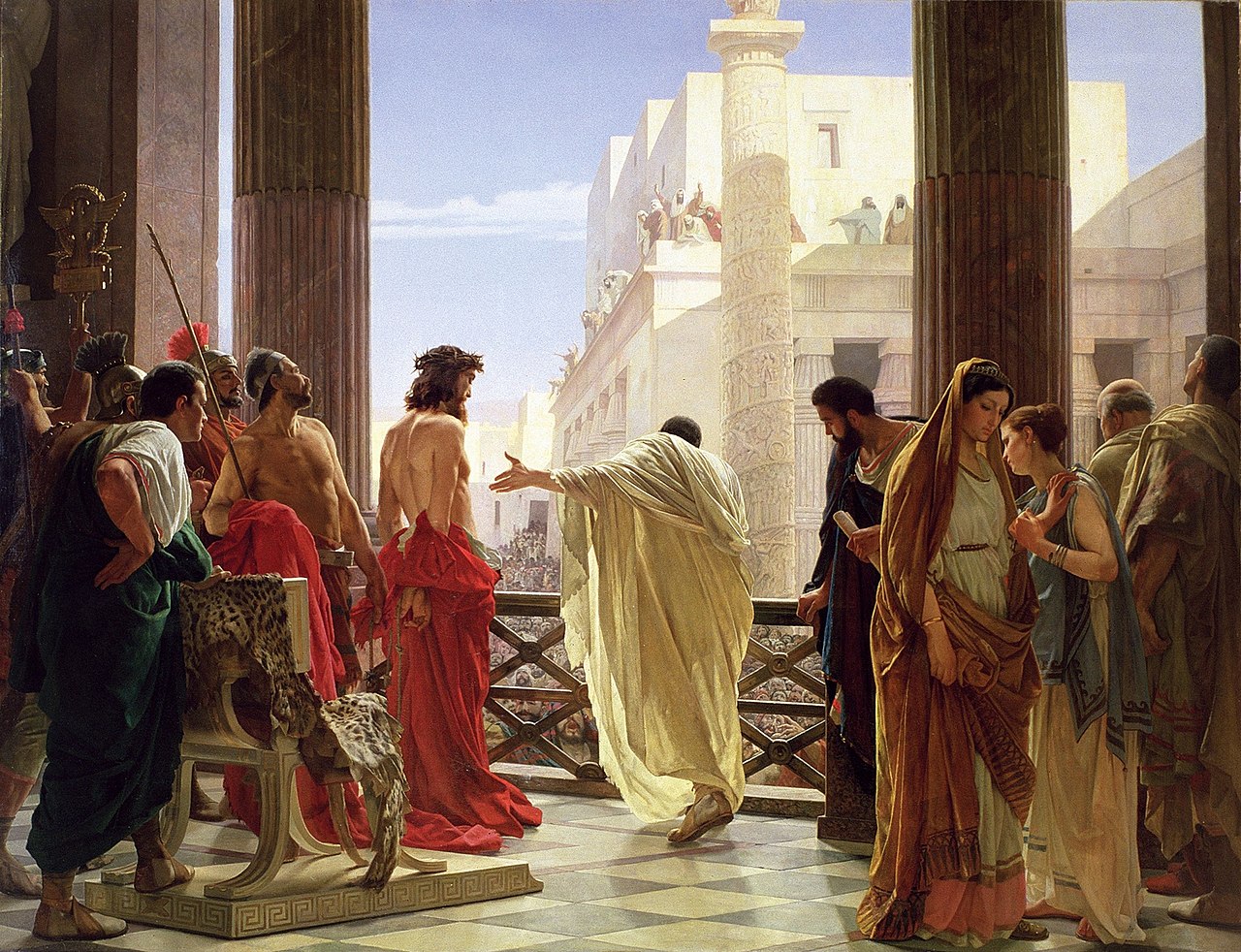Geologists have identified evidence of an earthquake in the Dead Sea region that appears to correspond with the historical timeframe of Jesus’ crucifixion, possibly offering the first geological support for the earthquake event described in the Gospel of Matthew.
A research team led by geologist Jefferson Williams found evidence of an earthquake occurring around 31 AD. Published in the International Geology Review in 2012, their findings have a margin of error of approximately 5 years. This timing corresponds exactly with Pontius Pilate’s governorship of Judea from 26 to 36 AD.

Biblical Account and Historical Context
Matthew’s Gospel describes an earthquake at the time of the crucifixion. “At that moment, the curtain of the temple was torn in two from top to bottom. The earth shook, the rocks split, and the tombs broke open.” A second earthquake is mentioned the following morning, when a group of women visited the tomb. “Suddenly there was a violent earthquake, for an angel of God came down from heaven, rolled away the stone and sat on it.” Williams suggests this second event may describe what scientists now call an aftershock.
All four gospels, along with the Roman historian Tacitus, place the crucifixion during Pontius Pilate’s governorship. These independent written records point to the same general timeframe, supporting the timing Williams and his colleagues identified.
Ground shaking from this earthquake would have been noticeable in Jerusalem. Located about 13 miles from the Ein Gedi study site on the western shore of the Dead Sea.
Geological Evidence from Dead Sea Sediments
Sediment cores extracted from the Dead Sea floor provided the geological evidence. These long columns of layered earth preserve traces of past earthquakes through bent, jumbled sections that indicate ground shaking occurred. At Ein Gedi, Williams’s team focused on cores containing annual layers known as varves, annual sediment layers that function as geological chronometers.
Like tree rings, these layers form as material settles each year. Researchers can count backward through time, one season at a time, creating an earth-based calendar stretching back millennia. Dating this disruption placed it sometime between 26 and 36 AD, corresponding exactly with Pontius Pilate’s years as governor and the historical window for the crucifixion.
While strong enough to disturb lake sediments at Ein Gedi, this earthquake may not have been powerful enough to cause widespread structural damage. This could explain why, aside from the biblical account, no known historical records describe an earthquake during that period.
Dating Methodology and Reference Points
A well-documented earthquake from 31 BC served as the researchers’ reference point for establishing their timeline accurately.

Jewish historian Josephus provides an account of this earlier earthquake, writing that it “destroyed an immense number of cattle, with thirty thousand men” during King Herod’s reign. This historical event demonstrates what kinds of earthquakes the Dead Sea region can produce and how such earthquake activity gets preserved in the geological record.
Williams’s team counted the annual layers upward through time from this marker to reach the first-century earthquake. Dating challenges emerged during the analysis. About 58% of the yearly layers between 31 BC and 31 AD proved difficult to interpret clearly. These reading difficulties led researchers to estimate a margin of error for their 31 AD date.
Validation Through Previous Research
Previous studies had proven this research approach reliable. Williams’s team had already identified 28 historically documented earthquakes across a 1,598-year interval using identical core analysis methods, providing confidence in their technique.
Other earthquakes occurred in the region during the broader timeframe, including events in 19 AD, 37 AD, and 47 AD. None of these earthquakes was strong enough to cause the necessary ground shaking, Williams found. Creating the sediment deformation at Ein Gedi required a more powerful earthquake event.
Three Possible Interpretations
Rather than claiming the biblical account’s accuracy, Williams presents three possible scenarios for their findings. First, the earthquake described in the Gospel of Matthew occurred more or less as reported. Second, the biblical author borrowed details from an earthquake that happened sometime before or after the crucifixion, but during Pontius Pilate’s reign. Third, the earthquake reference in Matthew represents symbolic storytelling rather than literal fact. In this case, the 26-36 AD earthquake event was simply an unrelated local earthquake that left no other historical record.
Astronomical Dating of the Crucifixion
Astronomical calculations have helped researchers narrow down when Jesus’s crucifixion might have occurred within Pilate’s reign by determining if the Jewish month of Nisan would have fallen on a Friday. This analysis identifies Friday, April 3, 33 AD, as among the most likely dates, with Friday, April 7, 30 AD, remaining another leading possibility. Both dates fall squarely within Williams’s earthquake timeframe, raising the possibility that the earthquake described in Matthew may have shaken the ground during Jesus’s crucifixion.
Researcher’s Perspective and Ongoing Studies
Williams points out that their geological evidence shows a connection with the biblical timeframe rather than proving one thing caused another, or validating religious accounts.
There is also a bigger scientific investigation that continues beyond this earthquake study. Williams is examining dust storm deposits in the sediments. These deposits might explain the darkness that the three gospels report occurred “from noon to 3 p.m.” after the crucifixion.
The Dead Sea as a Geological Archive
Unique geological conditions make the Dead Sea an exceptional archive for earthquake activity records. Layered sediments preserve annual records of environmental changes, including ground shaking, with clarity spanning thousands of years.
Similar research approaches could apply to other historical questions where geological evidence might illuminate ancient events. Williams and his colleagues stress that their findings regarding the first-century earthquake represent geological observations rather than theological conclusions about Jesus’ crucifixion.
Read More: New Discovery at Jesus’ Burial Site Aligns with Gospel Descriptions of a Garden

